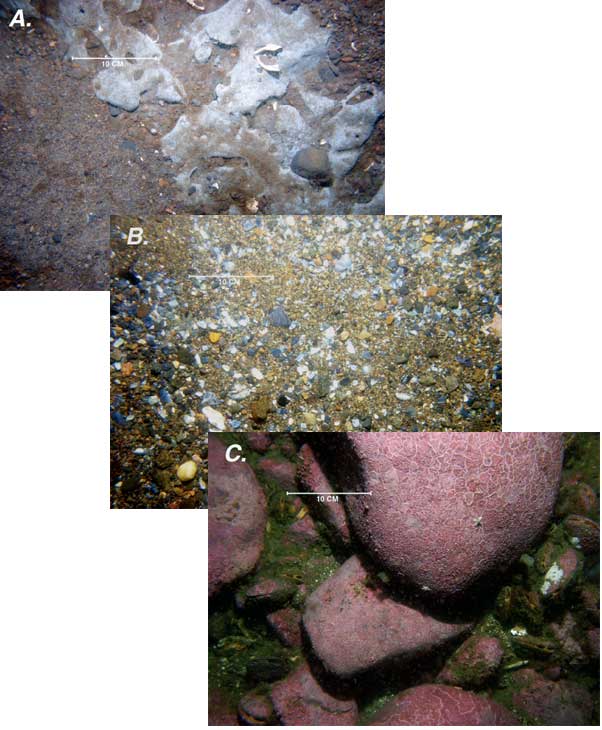Fact Sheet 2006–3042

Figure 5. Photographs of the seafloor. A, A thin, discontinuous sheet of sand partially buries underlying deposits of blue-gray, cohesive clay (glacial marine sediment). The sand is associated with areas of low backscatter in figure 3. B, Sand and gravel with shell fragments derived from calcareous organisms that live on adjacent areas of hard substrate. Sand and gravel is associated with areas of moderate to high backscatter in figure 3. C, Cobbles and boulders encrusted with coralline algae, barnacles, and mussels are associated with areas of high backscatter in figure 3. Crevices provide shelter for lobsters and other organisms.
This figure exhibits three color pictures of the seafloor between Gloucester to Nahant, Massachusetts. The top picture, A, shows sand partly covering a bluish-gray outcrop of clay. The middle photograph, B, shows gravel and shells. The bottom photograph, C, shows large rocks up to 30 cm (1 foot) in diameter that are encrusted with red algae, barnacles, and mussels. On each photograph, there is a 10-cm scale bar.